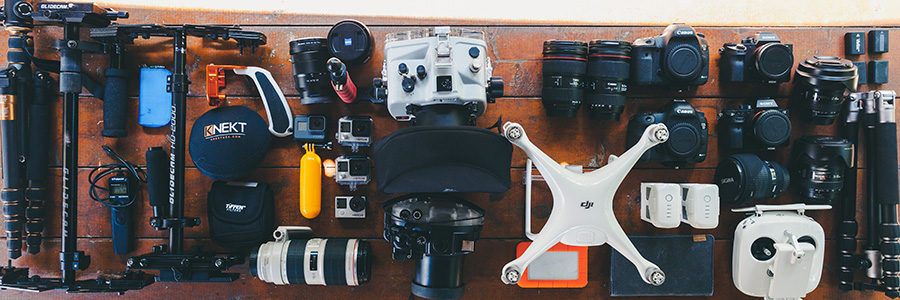How to commission a great video – Part 2

Pre-production
This is the planning phase where you and the production company agree on the general creative approach (the treatment) and all of the creative parts that need to happen before you shoot your video, namely, a script (the words that will be said either by an actor, on screen interview ‘a talking head’, a voice-over or on-screen captions) and a shot-list…the individual shots that will make up for the footage that needs to be filmed in order to tell your story.If your budget allows and you think it’s required, you might want to create a storyboard too. This is a sequence of (usually) hand drawn sketches that will help your director and camera operator film exactly what you need if a shoot is required. You can find some freelance storyboard artists here.
Once you’re all agreed it’s time to start the production!
Production
For starters, a video production doesn’t always mean getting cameras out and starting to film. Your treatment might benefit from a purely animated video. That means no camera crew or location shoots. Instead it means working with an animator(s) who will produce animated footage to illustrate the story. This approach works really well for a lot of corporate videos, especially for tech companies, trying to explain complicated, abstract ideas.If you do want to file a ‘live action’ video (the real world captured on video) then Production is the phase where the director, camera operator and/or animator work to the treatment and shot-list you’ve provided in order to produce the video footage you need. A live action video requires that you either shoot footage from scratch or buy it from a stock library, iStock for example.
However, you acquire your footage, once you have it you will need to edit it. Again, this is something that a production company should organise for you.
Top tip
If you have multiple locations on your shoot, try to choose a place where suitable locations are close together. Rig/derig time for a crew can eat into a shoot day so the less travel time you have to factor in the better. This is just one place where careful planning comes into play.If you decide to go the animated video route, then you don’t need any live action footage. This can seem like cost saving because there’s no cameraman, sound recordist, director, no lengthy planning for the shoot, or location costs such as accommodation for the crew etc… You also won’t need an editor because there will be no footage to edit!On the face of it then, animation sounds like a great way to go, and yes, it is for some projects, but don’t expect to save lots of money. Animation starts with nothing, a blank canvas, so to build up a 2-minute video promo for example is expensive. It’s also much slower to make changes to an animated video. Whereas with live action footage the editor can just recut the part of the video you want changed using other footage, with animation you don’t have any other raw material to turn to, so you have to start that sequence again.
Top tip
Depending on the type of video you want to produce you could save a lot by using stock footage. That’s footage available to download from on line resources like iStock and Getty images. There are some circumstances when your video will have to be shot from scratch (if it requires interviews or specific locations for example) but if your video is more generic then the stock libraries might be a life saver. Individual HD clips can be bought for a $100 or much less if you buy a bundle of credits up front.
Post-production
If you have chosen to go down the live action video route, then the final phase is post-production. Post-production involves all kinds of aspects including colour correction, editing, animations and on-screen captions.Post is a complex process that should not be underestimated in terms of its contribution to the overall production. You can have the finest footage in the world but if you have a bad editor you can still make a bad video. Likewise, if you have a load of rubbish footage a great editor might still be able to save your bacon!
The pictures are not the end of the story during post, either. Audio plays a major role – music, atmospheric sound and spot effects sounds may all be required – all of which have to be mixed with any sync sound from actors/talking heads or voice over.
Top tip
Music is transformational so get it right before the editor starts working. I estimate that the choice of music can add (or subtract!) 30 percent to the perceived quality of a video so make sure you choose wisely from the start.
Unless you have massive budgets you won’t be able to use commercial music (what you hear on the Radio or on Spotify). Go instead to production music libraries such as Universal or to smaller independent libraries like The Funky Junkies or Inspired Production Music and choose some suitable music from there. Much of it is really high quality these days and has often been written and produced by professional musicians who would also contribute to commercial music.
There are also specialist firms such as Big Sync Music that can source the right music for you or even get it composed for you. Not for budget conscious start-ups I’d suggest.
Costs
Costs for producing great quality videos these days are less than they used to be when a High def capable DigiBeta camera set you back $50K before you had even bought the lenses and loaded the first tape. Todays’ pro-sumer cameras cost much, much less but still let you capture some world class footage and that means equipment costs, if not the operators themselves, have gone down.This is only a rough guide but with a small production company expect to pay $7K for a simple video involving some script writing, one shoot day with a self-directing cameraman and 2-3 days of editing time. For a more complex video with more locations, more edit days and maybe some motion graphics to polish the final piece then allow $10-20K. For animation, as a rule of thumb, it’s probably safe to allow $5-7K per minute for 2D animated video with a decent production company.As always, if you can find talented operators yourself you’ll save on the production companies management time…but don’t underestimate what goes into producing a good video, it is very time-consuming, especially if you don’t know all the ins and outs and all the jargon. Production companies are not estate agents, or recruitment agencies simply making a mark-up – a good production company will add real value.Of course, these days some people think there are shortcuts to getting quality video. There are platforms out there like seen.it that allow you to crowd source your footage and then have those clips edited together. It’ll still cost you a few grand and the quality won’t be there compared to a professionally produced video but you might get something useable out of it.Make the valuable visible. REQUEST A DEMO today to showcase amazing content which presents your brand at its best.



